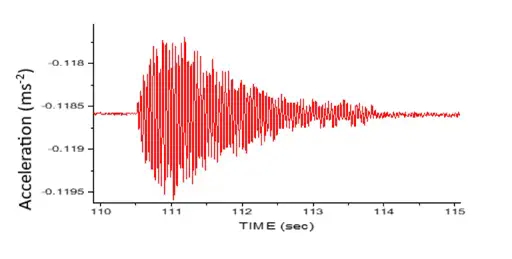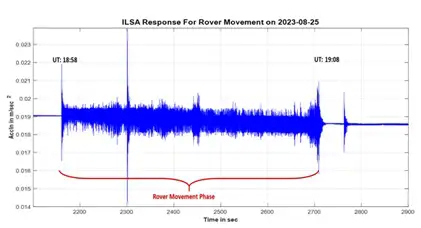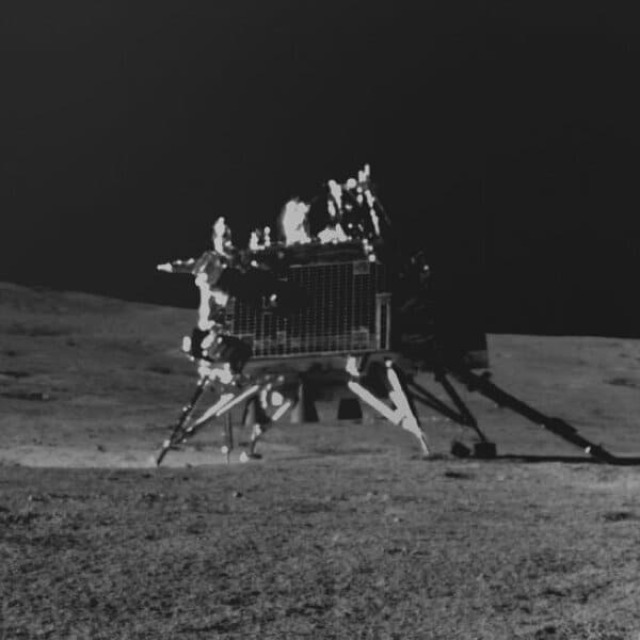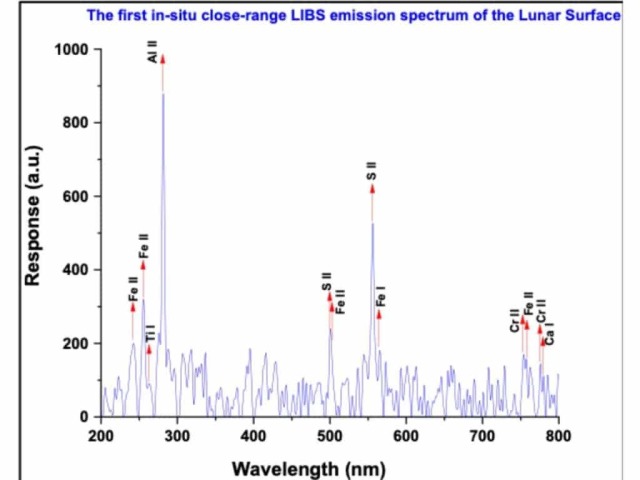The exact nature of the registered event is still being clarified. In addition, the devices of the Indian mission made rather unusual observations about the composition of the lunar surface next to them and for the first time were able to measure the density of the circumlunar plasma near the surface of the southern circumpolar region of Selenium.
The Vikram lander of the Indian Chandrayan-3 space mission is equipped with an instrument for tracking Lunar Seismic activity (ILSA). Technically, this is a complex of six highly sensitive accelerometers, the key part of which consists of springs that deviate from the normal position during external vibrations. At the same time, their capacitive resistance changes, which causes a recorded change in the voltage in such a system.
With the help of this compact device, Vikram previously managed to record "seismic activity" from the descent and movement of its own lunar rover Pragyan. However, then, on August 26, before the lunar noon, when the instruments of the Indian mission are too hot to work, the same system registered a different seismic event. As you can see on the graph, it is definitely not related to the lunar rover: its amplitude is larger, and after the initial burst, the event quickly fades.
 |
| An event recorded by the seismograph of the Indian lander[. |
| Source: Wikimedia Commons |
At the same time, it is not so easy to say with confidence that this is a moonshake. Although the moon is not geologically dead, as it was thought in the 1960s, it rarely gives serious events of this kind. In addition, due to the absence of an atmosphere, meteorites often fall on it. Such an event can give a local ground shaking, which a seismograph can record. Even on Earth, where meteorites reach the surface much less frequently, seismographs register small shock events — for example, explosions of bombs and cruise missiles. Now the Indian Space Agency is conducting an analysis, trying to establish the exact nature of what was recorded.
 |
| For comparison, you can look at the seismograph recording of the movement of the Indian lunar rover. It is easy to see that here the signal amplitude is much smaller, but it is more uniform. |
| Source: Wikimedia Commons |
In addition, with the help of the Langmuir probe, the Indian lander found that the density of the concentration of circumlunar plasma in the southern polar region is relatively small — from five to 30 million electrons per cubic meter. This is the first measurement of its kind in the polar regions of the Earth's satellite.
Earlier, the instruments of the Chandrayan-3 mission studied the composition of the soil near the landing site. The list of elements they found did not suggest surprises — for example, it was not possible to register hydrogen from water, because the landed vehicles cannot dig, and it is too hot on the surface, which is why all the water evaporated.
But what is really surprising is the comparative strength of the signals recorded by the spectrometer. Judging by them, sulfur was the second most common element in the Vikram landing area. It was found in the lunar soil after the Apollo missions, but the content there was much lower.
It turns out that the terrain in the southern polar region of the Moon, at least in the landing zone of the Indian automaton, is rich in some kind of sulfur-containing rock. Which one and why is not yet clear. Probably, the following missions will be able to establish this.


